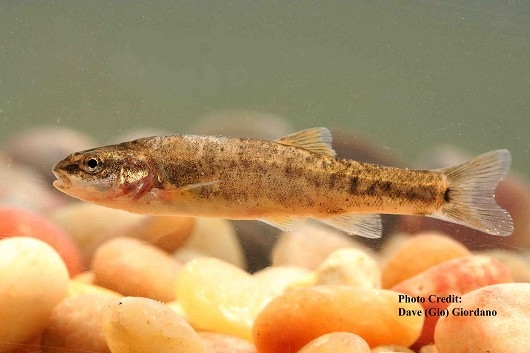Posts Tagged: extinction
Yes, You Can Attend the 'Saving a Bug's Life' Symposium
Yes, you can. If you've been wondering if there's still room for you at the innovative UC Davis symposium on "Saving a Bug's Life: Legal...
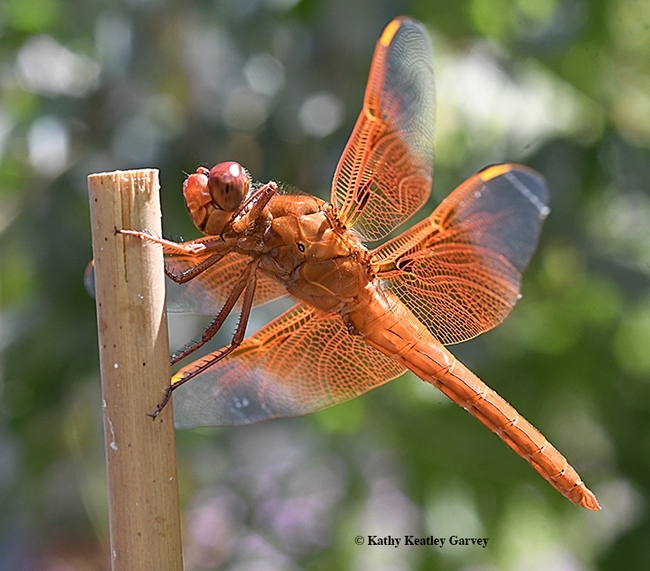
A flameskimmer dragonfly, Libellula saturata, perches on a stake in Vacaville, Calif. (Photo by Kathy Keatley Garvey)
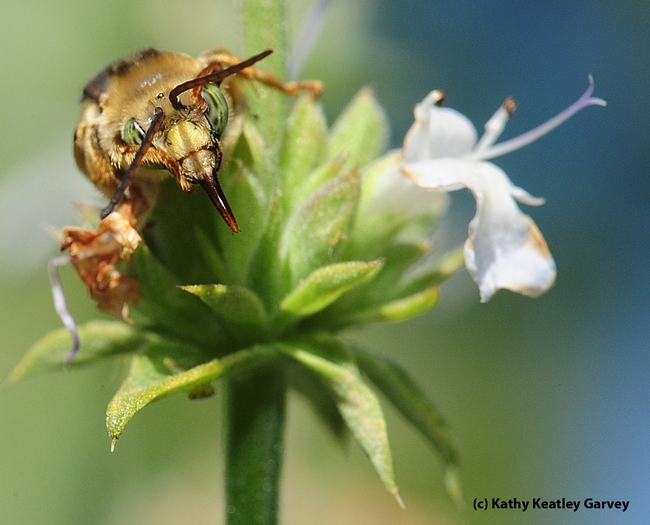
A longhorned bee, Melissodes sp., in Davis, Calif. (Photo by Kathy Keatley Garvey)
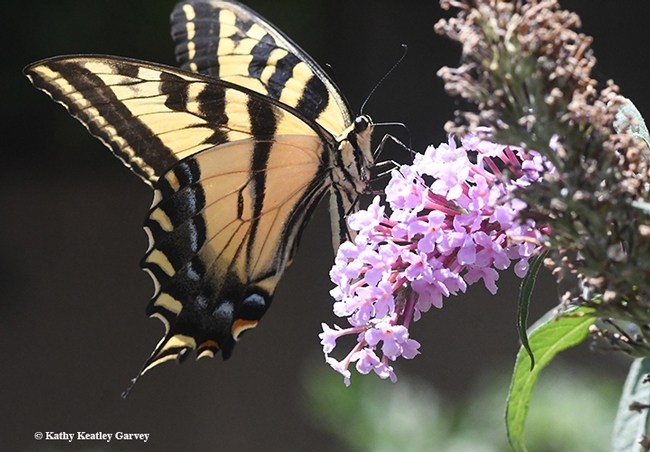
A Western tiger swallowtail, Papilio rutulus, nectaring on a butterfly bush in Vacaville, Calif. (Photo by Kathy Keatley Garvey)
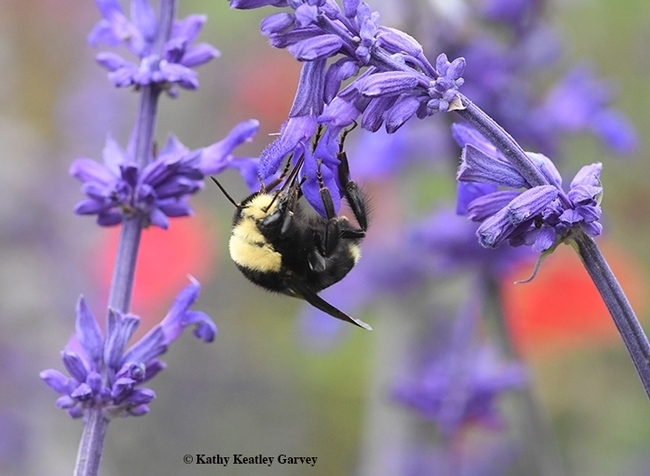
A yellow-faced bumble bee, Bombus vosnesenskii, spiked floral purple plant, nectaring on a Salvia indigo spires (Salvia farinacea x S. farinacea) in Sonoma. (Photo by Kathy Keatley Garvey)
Are Western Monarchs Heading for Extinction?
Are western monarch butterflies heading for extinction? A Sept. 7 article in Reuters, headlined "Monarchs in Western United States Risk Extinction,...
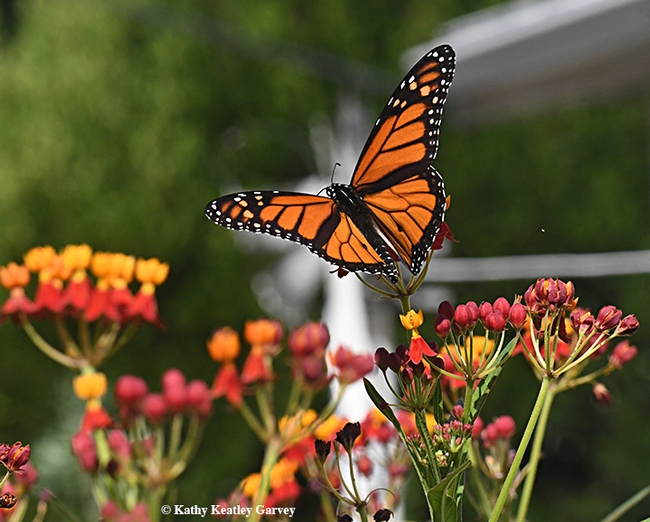
A male monarch takes flight on Sept. 12 in Vacaville, Calif. (Photo by Kathy Keatley Garvey)
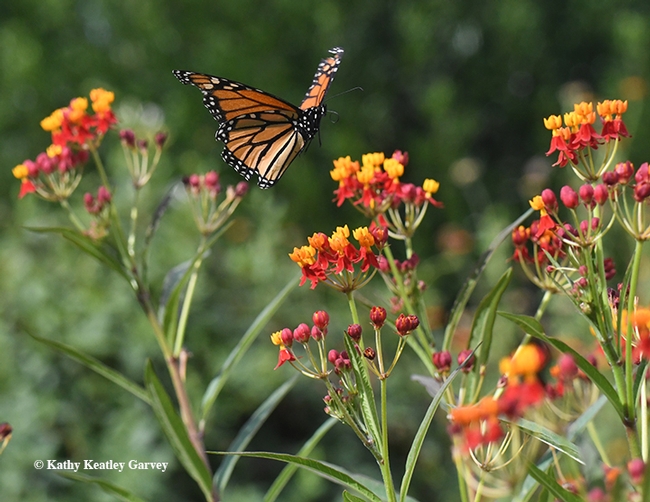
A male monarch heads for another flower on tropical milkweed, Asclepias curassavica, in Vacaville, Calif. (Photo by Kathy Keatley Garvey)
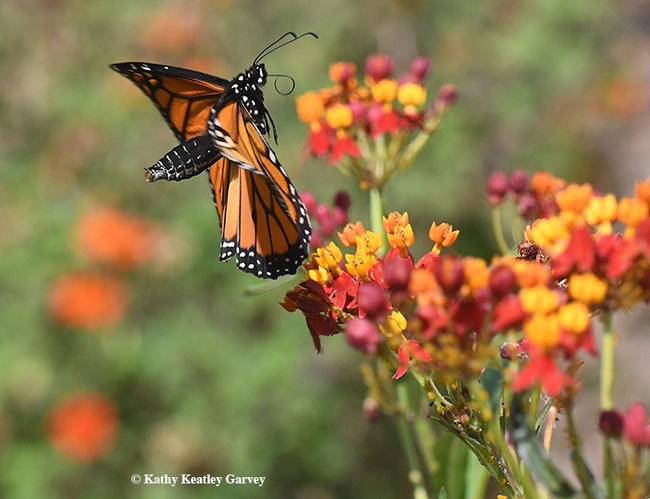
Startled, a male monarch abruptly leaves a tropical milkweed blossom, Asclepias curassavica, in Vacaville, Calif. (Photo by Kathy Keatley Garvey)
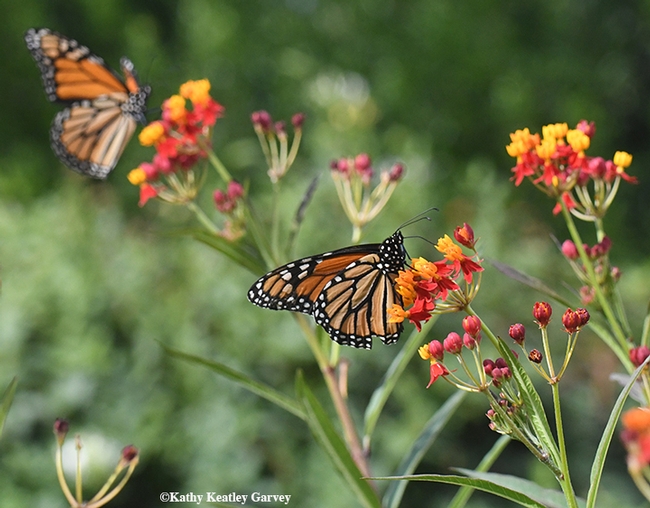
Monarchs nectaring on tropical milkweed, Asclepias curassavica, in Vacaville, Calif. (Photo by Kathy Keatley Garvey)
Climate change threatens California native fish
The study, published online in May in the journal PLOS ONE, assessed how vulnerable each freshwater species is to climate change and estimated the likelihood that those species would become extinct in California within 100 years.
The researchers found that, of 121 native fish species, 82 percent are likely to be driven to extinction or very low numbers as climate change speeds the decline of already depleted populations. In contrast, only 19 percent of the 50 non-native fish species in the state face a similar risk of extinction.
“If present trends continue, much of the unique California fish fauna will disappear and be replaced by alien fishes, such as carp, largemouth bass, fathead minnows and green sunfish,” said Moyle, who has been documenting the biology and status of California fish for the past 40 years.
“Disappearing fish will include not only obscure species of minnows, suckers and pupfishes, but also coho salmon, most runs of steelhead trout and Chinook salmon, and Sacramento perch,” Moyle said.
Fish requiring cold water, such as salmon and trout, are particularly likely to go extinct, the study said. However, non-native fish species are expected to thrive, although some will lose their aquatic habitats during severe droughts and low-flow summer months.
The top 20 native California fish most likely to become extinct in California within 100 years as the result of climate change include (asterisks denote a species already listed as threatened or endangered):
- Klamath Mountains Province summer steelhead
- McCloud River redband trout
- Unarmored threespine stickleback*
- Shay Creek stickleback
- Delta smelt*
- Long Valley speckled dace
- Central Valley late fall Chinook salmon
- Kern River rainbow trout
- Shoshone pupfish
- Razorback sucker*
- Upper Klamath-Trinity spring Chinook salmon
- Southern steelhead*
- Clear Lake hitch
- Owens speckled dace
- Northern California coast summer steelhead
- Amargosa Canyon speckled dace
- Central coast coho salmon*
- Southern Oregon Northern California coast coho salmon*
- Modoc sucker*
- Pink salmon
The species are listed in order of vulnerability to extinction, with No. 1 being the most vulnerable.
Climate change and human-caused degradation of aquatic habitats is causing worldwide declines in freshwater fishes, especially in regions with arid or Mediterranean climates. These declines pose a major conservation challenge. However, there has been little research in the scientific literature related to the status of most fish species, particularly native ones of little economic value.
Moyle saw the need for a rapid and repeatable method to determine the climate change vulnerability of different species. He expects the method presented in the study to be useful for conservation planning.
“These fish are part of the endemic flora and fauna that makes California such a special place,” said Moyle. “As we lose these fishes, we lose their environments and are much poorer for it.”
Co-authors of the study were postdoctoral students Joseph Kiernan, Patrick Crain and Rebecca Quiñones of the Center for Watershed Sciences at UC Davis. Funding for the study was provided by the California Energy Commission.
Media coverage of the study includes:
USA Today: Climate change threatens 82% of native California fish
LA Times: California native fish could disappear with climate change


